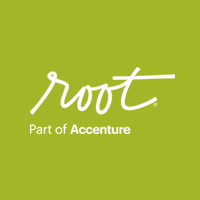When we think about the “future of workplace learning,” it sounds like a big, heady topic best left to the academic elite to solve. But I would beg to differ on that, as I think in concept it’s fairly simple: We just need to meet our users and team members where they are, and not necessarily where it’s most convenient for us to be as business leaders. As I said, in concept that’s very simple; the execution, however, is a much steeper hill to climb. Nonetheless, the way learners approach information is changing rapidly, and on the whole most companies have a lot of catching up to do.
So let’s help you get there more quickly. By considering and quickly embracing these three ideas, your organization will start living the future today – and, most importantly, do a better job of meeting your users where they are.
USERS MOBILE


 I’ll have that to go please.
I’ll have that to go please.
As more and more companies embrace flexible, geographically dispersed work environments, the idea that learning only happens at the office or in a classroom is far past its expiration date. We’re already starting to see the benefits of mobile workplace learning – greater self-discovery, the ability to cross-share, and the ability to get information when and where people want it.
While the “future” may seem far away, we need to start thinking now how we can make learning independent of location so that we reach learners wherever they are.
USERS SOCIAL


 My 623 Facebook friends agree that social is the way to go.
My 623 Facebook friends agree that social is the way to go.
As humans, we’re social by nature, and we as employees learn 70 to 90% of what we know “informally” – that is, outside the structured “classroom,” via good old-fashioned practice and trial and error. According to Charles Jennings, it’s time to embrace informal, social learning channels.
And when you step back to think about it, this isn’t rocket science. With the speed and amount of information we’re juggling today, and our constant access to it, social/informal learning is a huge opportunity for companies to leverage globally. When we as business leaders provide avenues for more informal, social learning – such as access to social media related to people’s jobs – we can help them do their jobs better. The added bonus? Social media can help us see if our training is hitting the mark and uncover the issues learners are really struggling with. And that can help us do our jobs better.
USERS QUICK HITS


 I’ll just have a little bite, please – but leave it, I’ll want more later.
I’ll just have a little bite, please – but leave it, I’ll want more later.
Want to get started with the future of workforce learning? Start on this one. With mobile taking over, screens are getting smaller and we’re not sitting in one place for very long. Combine that with the importance of informal, “in-the-moment” learning and practice in fostering real knowledge retention and mastery, and you’ve got to start giving users access to information and learning in a way that makes more sense to them – in bite-sized, easy-to-digest chunks.
It’s time to think beyond traditional seat-time learning. As people, we don’t have the time or attention span for this – or, as Dr. John Medina more eloquently states, “We don’t pay attention to boring things!”
These short, modular, bite-sized information nuggets are the fuel for continuous learning and execution in organizations because we as humans need easy information access and practice to push performance to the next level. These types of performance support tools are shown to increase user knowledge and retention by anywhere from 200 to 700% when executed well. In other words, this stuff works.
So is traditional learning a thing of the past?
As we think about these concepts of mobile, social, and bite-sized information, we still need to remember that most times they exist in an ecosystem that has a long legacy setting a precedent and foundation. (For the learning and development folks, think compliance-based LMS with a robust curriculum attached.) Indeed, they need to coexist with longer-form content, knowledge, and curriculum, where these new tools act as accelerators to execution and performance.
Meeting users where they are is the first step in developing talent and skills effectively.
Mobile, social, and bite-sized information are worthless unless also applied with design thinking and a user-centered approach. And this goes beyond just workplace learning – these concepts can (and should) be leveraged beyond just the training and development function. Indeed, these ideas are fundamental to improving our performance across the board – be it in our personal lives or in the professional world of pushing our companies’ strategic and operational performance to the next level.






